- Home
- Things to Do in Sicily
- Roman Ruins in Sicily
- Villa Romana Del Casale
Unveiling the Secrets of Villa Romana del Casale: A Journey Through Ancient Luxury and Artistry
Step into Villa Romana del Casale, a rare piece of cultural history deep in the heart of Sicily. This remarkable Roman villa, famed for its exquisite mosaics, offers a unique glimpse into the opulence enjoyed by elite Romans during the 4th century.
As you wander through its grand halls, you'll discover artistic scenes that tell stories of daily life, mythological grandeur, and natural beauty. Each mosaic was crafted with exceptional skill by ancient artisans.
Every corner of this UNESCO World Heritage site reveals secrets. As you wander through its rooms, you will be transported to the splendor of Roman civilization.
From its architectural elegance to artistic achievements, the Villa Romana del Casale reminds us of ancient history's enduring relevance. Prepare to uncover the hidden treasures of this ancient mansion and let the echoes of the past enliven your mind.
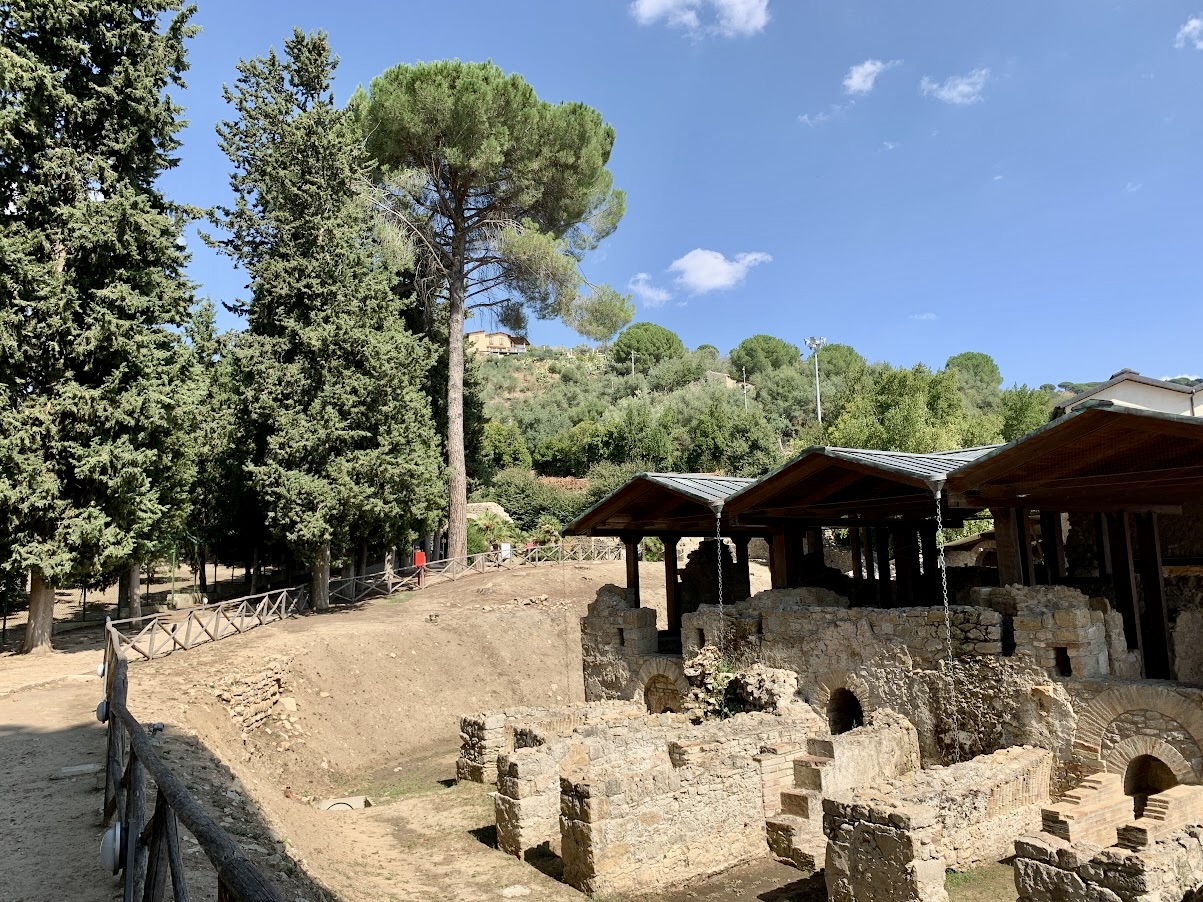 In front of Villa Romana del Casale.
In front of Villa Romana del Casale.Historical Significance of Villa Romana del Casale
Villa Romana del Casale, located near Piazza Armerina in Sicily, is one of the most significant archaeological sites of what is left of the Roman Empire. Constructed in the early 4th century AD, the villa is believed to have been a hunting lodge or an imperial residence.
The empire was in decline then, and wealthy Romans began to focus on the peace of the countryside instead of the capital's chaos. One of those wealthy and powerful also strayed to central Sicily, where he built his villa, which included 37,000 square feet of intricately carved mosaics.
The exact identity of the villa's owner remains a mystery. But something has been deduced from the mosaics, especially their subject matter. They suggest that the villa's owner was a senator and exotic animal dealer.
The Villa Romana del Casale is also special in that it is one of the few remains of the Roman Empire in Sicily. This is even though Sicily was the first Roman province outside mainland Italy.
Sicily's destiny in the Roman Empire was to be a strategic base and a food producer. The Romans brought less culture to the island than their predecessors, the Greeks - or those who came after them: Arabs and the Normans.
Still, something remained. The most notable of those remains is Villa Romana del Casale. Due to its remote location and the mudflow that covered it in the 1300s, the site has remained in excellent condition, escaping looting and vandalism.
As a result, we now have an exceptionally well-preserved collection of Roman mosaics.
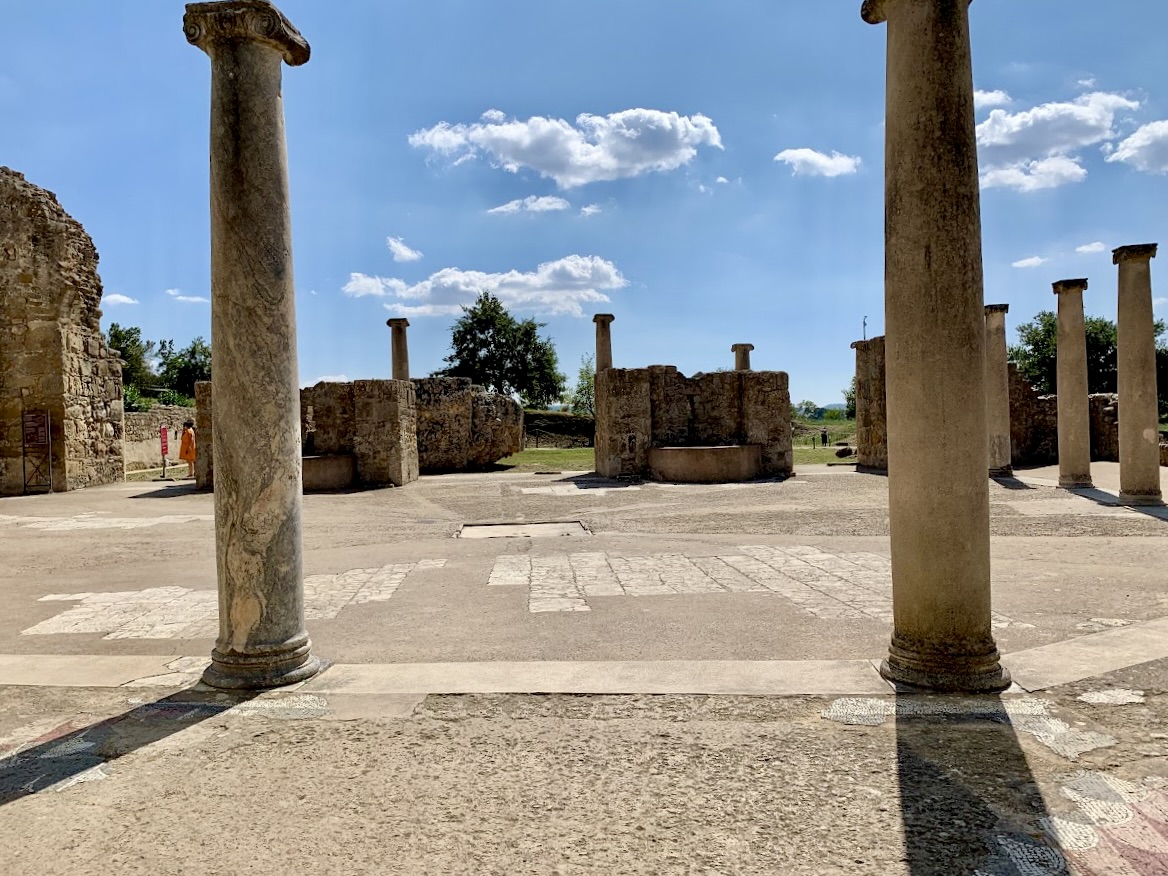 The entrance to Villa Romana del Casale.
The entrance to Villa Romana del Casale.The Villa's Role in Roman Society
The villa's opulence and mosaic artistry reflect the status and influence of its owner, who was likely a high-ranking political figure. The villa served as a venue for social gatherings, political meetings, and cultural events, playing a significant role in the social and political life of the region.
The extensive use of mosaics depicting scenes of hunting, mythology, and daily life demonstrated the owner's appreciation for art and culture. These mosaics were decorative and served as a form of storytelling, conveying the values and achievements of the Roman elite.
Architectural Marvels of the Villa
The architectural layout of Villa Romana del Casale is divided into four main sections: the main entrance with thermal baths, the central courtyard, the private apartments, and the basilica.
The main entrance is particularly noteworthy for its grandiose thermal baths, demonstrating Roman engineers' advanced understanding of heating and water management. The presence of hypocausts, an ancient Roman underfloor heating system, reveals the sophisticated methods employed to provide comfort and luxury to the villa's inhabitants.
The central courtyard, or peristyle, is surrounded by a colonnaded portico, which opens into various rooms adorned with elaborate mosaics. This area served as the heart of the villa, providing access to the private apartments and public areas.
The private apartments, including the master's quarters, are lavishly decorated and strategically positioned to offer privacy while ensuring easy access to the villa's amenities.
The villa's architectural design highlights the Roman elite's aesthetic preferences and practical considerations. The layout ensures optimal use of space and natural light, with rooms oriented to benefit from the Mediterranean climate.
The integration of art and architecture at Villa Romana del Casale exemplifies the Roman ability to create living spaces that were both functional and visually stunning.
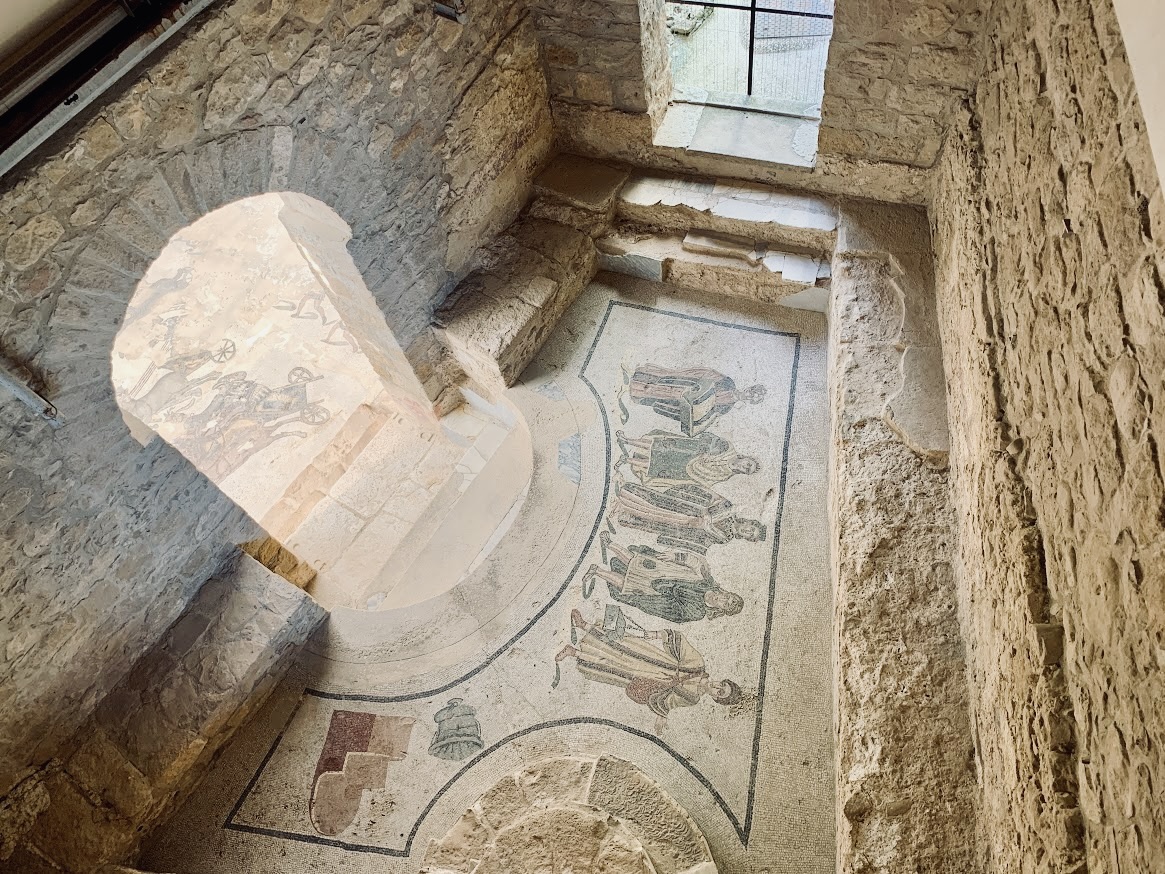 Floor mosaics in Villa Romana del Casale.
Floor mosaics in Villa Romana del Casale.The Mosaics of Villa Romana del Casale
The villa's historical significance lies in its architectural grandeur and the remarkable preservation of its mosaics, which provide invaluable insights into the era's art, culture, and daily life.
The mosaics are considered some of the finest and most extensive examples of Roman mosaic art. They depict various scenes, from mythological narratives to detailed representations of daily activities and exotic animals.
Mosaics were a popular way to decorate floors in ancient Greece and Rome. The Romans learned the technique from the Greeks. At first, the results were mediocre, but by the time Villa Romana del Casale was built, Roman artisans had perfected their technique.
Rome had the advantage of a vast empire, so it could import stones to suit all tastes and needs. The mosaics used ranged in size from the size of a pinhead to the size of a fingernail.
The Romans specialized particularly in meticulously realistic works, which, at their best, were like photographs.
After the fall of the Roman Empire, the art of mosaic making was passed on to Byzantium, from where it spread to the rest of the world. Some of the world's most famous mosaics are in the Hagia Sophia in Turkey, St Mark's Cathedral in Venice, and the Cathedral of Monreale near Palermo.
The mosaics of Villa Romana del Casale are renowned for their complexity, vivid colors, and wide range of themes. These mosaics are spread across nearly every room, transforming the floors into vibrant tapestries of life and mythology.
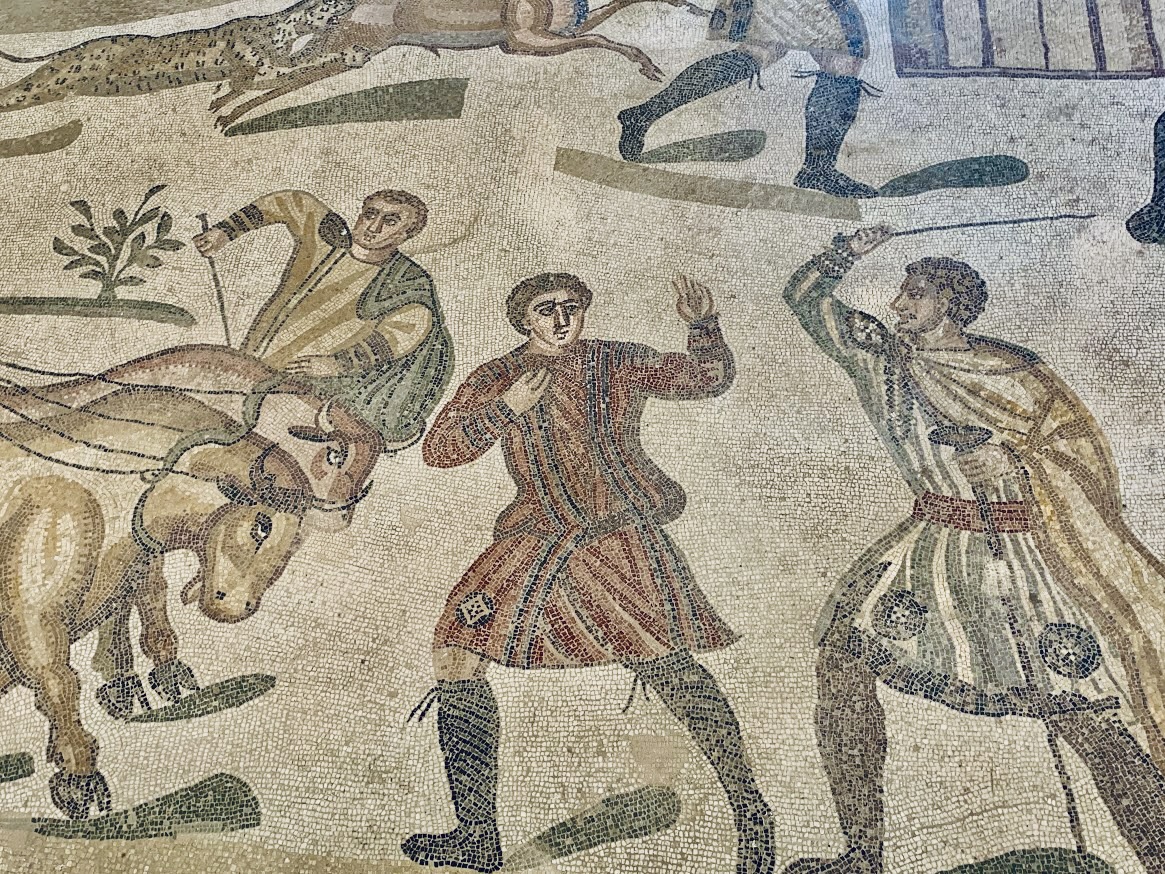 The mosaics of Villa Romana del Casale offer a glimpse into the life of the ancient Romans.
The mosaics of Villa Romana del Casale offer a glimpse into the life of the ancient Romans.One of the most famous mosaics is the "Great Hunt," which spans over 60 meters and depicts an elaborate hunting scene.
Another famous mosaic is the "Bikini Girls" in the "Chamber of the Ten Maidens." This mosaic features young women engaging in what appears to be athletic competitions, dressed in garments resembling bikinis—not too far from today's frisbee-throwing beach girls.
There are many more mosaics to wonder at. The floors and walls of these ancient rich and powerful are really quite a works of art.
The mosaics of Villa Romana del Casale can also be considered narratives, offering glimpses into Roman values, beliefs, and daily experiences. As such, they can be read like ancient comics or a movie.
Their preservation allows modern visitors to engage with the stories of a civilization that, despite being long gone, continues to inspire and captivate us.
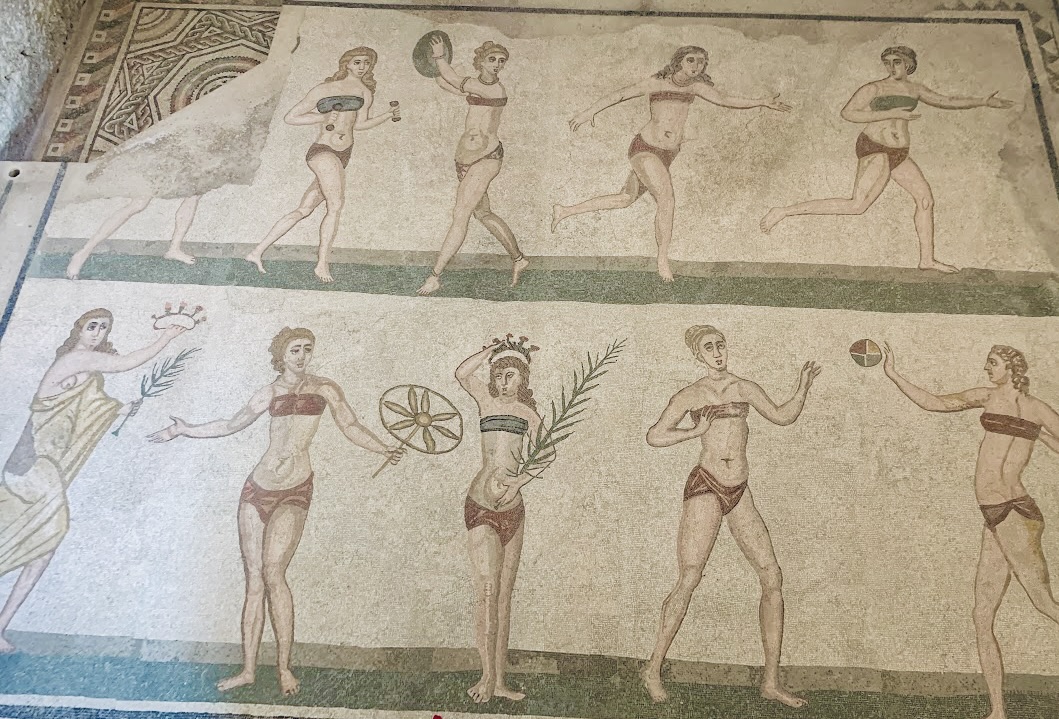 The famous "Bikini Girls."
The famous "Bikini Girls."Preservation and Restoration Efforts
A landslide in the 12th century buried the villa, which, while devastating at the time, ultimately protected the site from the ravages of time and human interference. The villa was rediscovered in the late 19th century, and systematic excavations began in the 1920s, revealing its extraordinary mosaics and architectural features.
Preservation efforts have focused on stabilizing and protecting the mosaics, particularly vulnerable to environmental factors such as moisture, temperature fluctuations, and biological growth. Advanced technologies have been employed to ensure the long-term preservation of these delicate artworks. This involves carefully cleaning and repairing the mosaics, reconstructing architectural elements, and installing protective structures.
Conservationists also work to prevent and repair damage caused by previous restoration attempts, which were not always carried out with the same expertise and sensitivity.
The Villa Romana del Casale is a UNESCO World Heritage site, and its preservation is a global responsibility. Collaborative efforts involving international experts, local authorities, and organizations such as UNESCO ensure that the villa is preserved for future generations to appreciate and learn from.
The ongoing preservation and restoration of Villa Romana del Casale are crucial for maintaining its status as one of the most important archaeological sites of the Roman Empire. These efforts ensure that the villa's extraordinary mosaics and architectural features can continue to inspire and educate visitors worldwide.
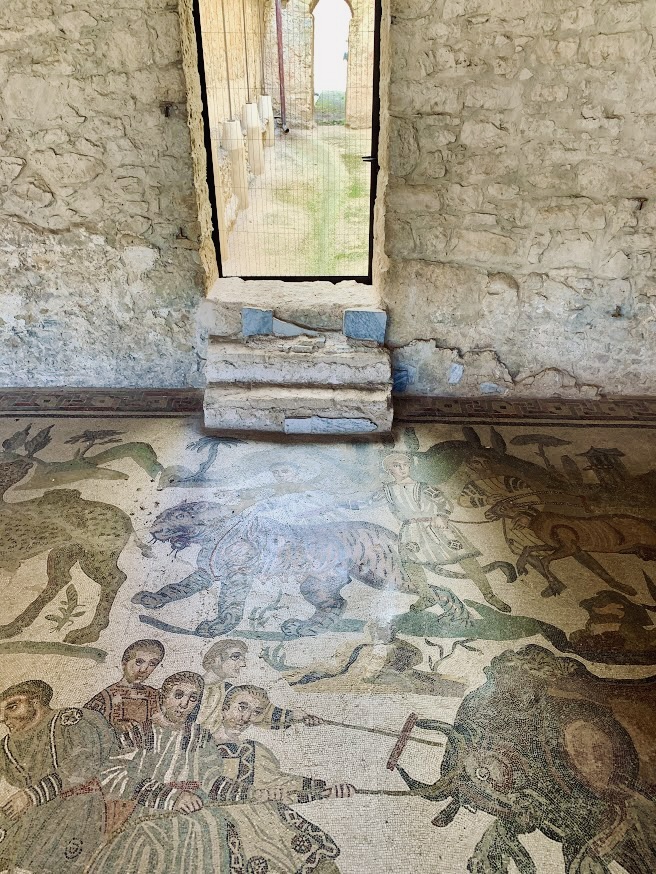
Visiting Villa Romana del Casale: Tips and Recommendations
Villa Romana del Casale is a little off the most popular tourist routes. To get there, you have to be prepared to make some effort. However, it's well worth the effort as you see one of the world's most important remains of the ancient Roman Empire.
The best way to reach Villa Romana del Casale is by car. The second easiest option is to take a package tour, which includes transportation to the site.
Or you can take a bus to the nearest town, Piazza Armerina, 2 kilometers from the site.
We did just that: While staying in Enna, we took a bus to Piazza Armerina. According to the guidebook, there should have been a bus connection from Piazza Armerina to the villa. However, we couldn't find one—or maybe the schedule didn't work out—so we took a taxi. It didn't cost too much.
There are also buses to Piazza Armerina from Catania and Palermo. Both take about two hours.
A large car park is next to the villa for those arriving by car. Take a ticket upon arrival and pay upon departure.
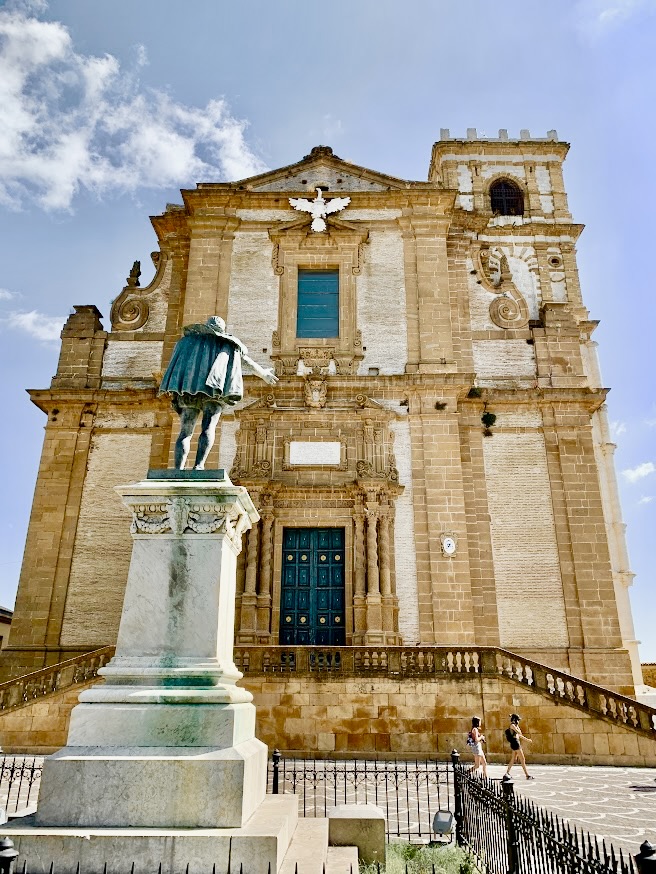 Piazza Armerina has a wonderful labyrinthine old town, through which we walked up to the Duomo. (In the picture.) From there, we took a taxi to Villa Romana del Casale.
Piazza Armerina has a wonderful labyrinthine old town, through which we walked up to the Duomo. (In the picture.) From there, we took a taxi to Villa Romana del Casale.When visiting the villa, reserve at least a couple of hours to fully appreciate the extensive site and its many mosaics. If in a hurry, you can get through it in an hour. The villa is open to the public year-round.
Guided tours are highly recommended. They provide valuable context and insights into the villa's history, architecture, and mosaics. Knowledgeable guides can help you understand the significance of the various scenes depicted in the mosaics and the cultural and historical context in which they were created.
Audio guides and informational panels are available for those who prefer to explore the site at their own pace.
The surrounding area offers a wealth of attractions and activities besides the villa. Piazza Armerina is known for its charming historic center, narrow streets, medieval buildings, and vibrant local culture.
There are also many interesting small towns in the surrounding area—like Enna and Caltanisetta—not to mention the beautiful countryside. There's a good bus connection to Enna from Piazza Armerina, but many smaller towns require a car.
Conclusion: The Enduring Allure of Villa Romana del Casale
Villa Romana del Casale is more than just an archaeological site; it is a living testament to ancient Roman civilization's opulence, artistry, and sophistication. The villa's exquisite mosaics, architectural marvels, and detailed depictions of daily life provide a unique and invaluable glimpse into a bygone era.
The villa's status as a UNESCO World Heritage site highlights its global significance and the importance of safeguarding cultural heritage. Through collaborative efforts involving international experts and local authorities, the villa's legacy is preserved for all to appreciate.
The Villa Romana del Casale, with its breathtaking artistry and historical significance, remains a beacon of ancient luxury and cultural achievement. It invites us to delve into the past, uncover the hidden treasures of a bygone era, and appreciate the enduring allure of Roman civilization.
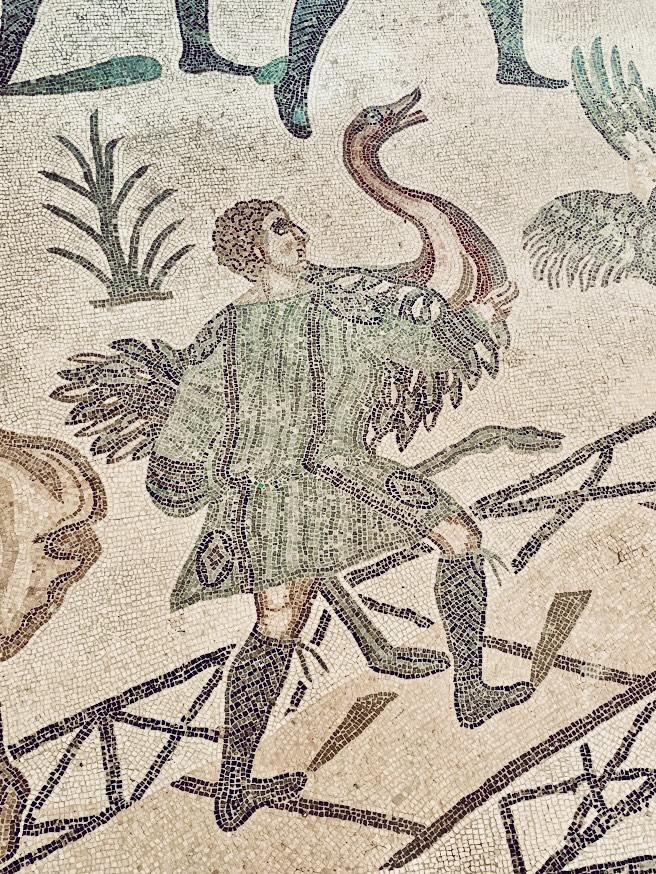
(April 29, 2025)
Recent Articles
-
Where to Stay in Sicily: Top Areas for Every Traveler
Nov 27, 25 08:14 AM
Where to stay in Sicily: A guide to the island’s best regions, helping you choose the perfect base for your trip. -
Cefalu Beaches: Where Sun, Sand, and Calm Await
Nov 26, 25 12:10 PM
Discover Cefalu beaches where warm sands, clear waters, and coastal charm come together. -
Selinunte Park - History by the Sea
Nov 14, 25 05:02 AM
Selinunte park, its rise to glory, destruction, and how to visit it.
Follow MANY FACES OF SICILY on Facebook, Instagram, Bluesky & Tumblr
Contact: vesa@manyfacesofsicily.com






